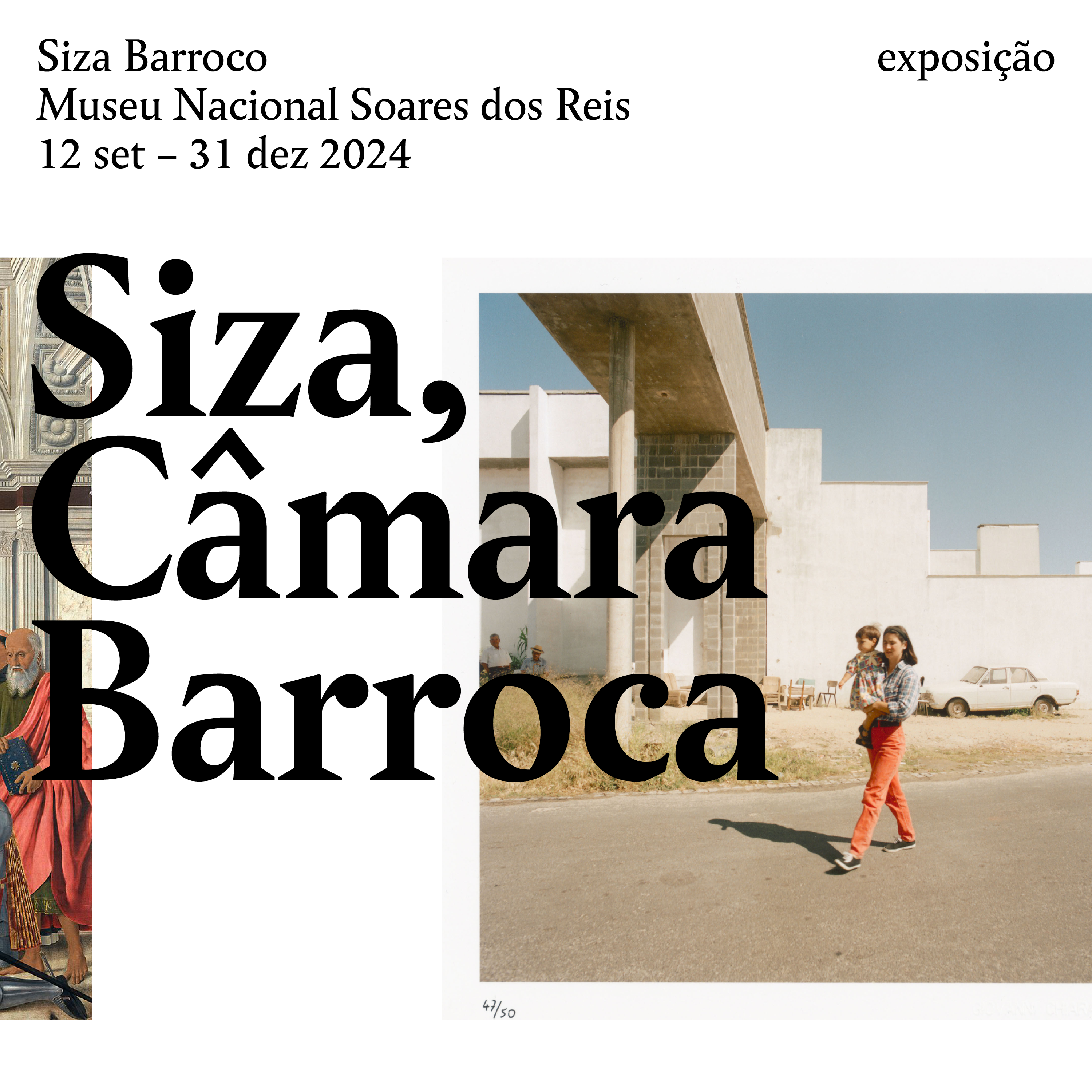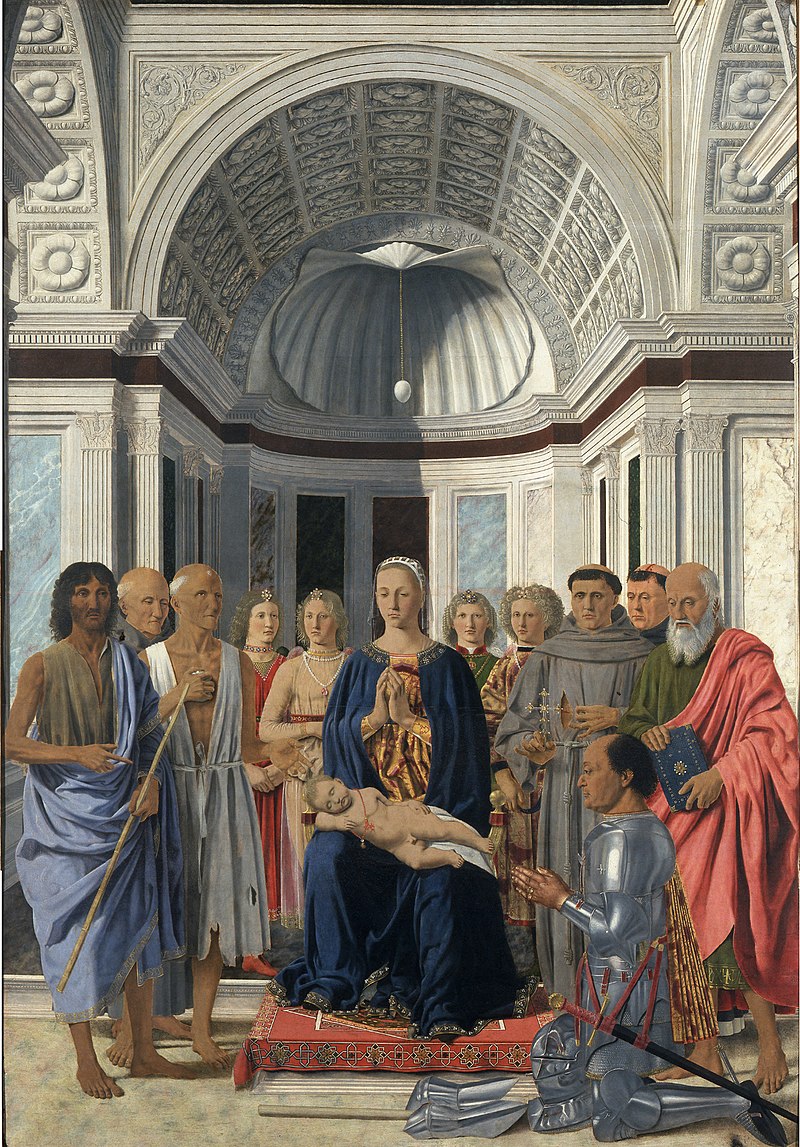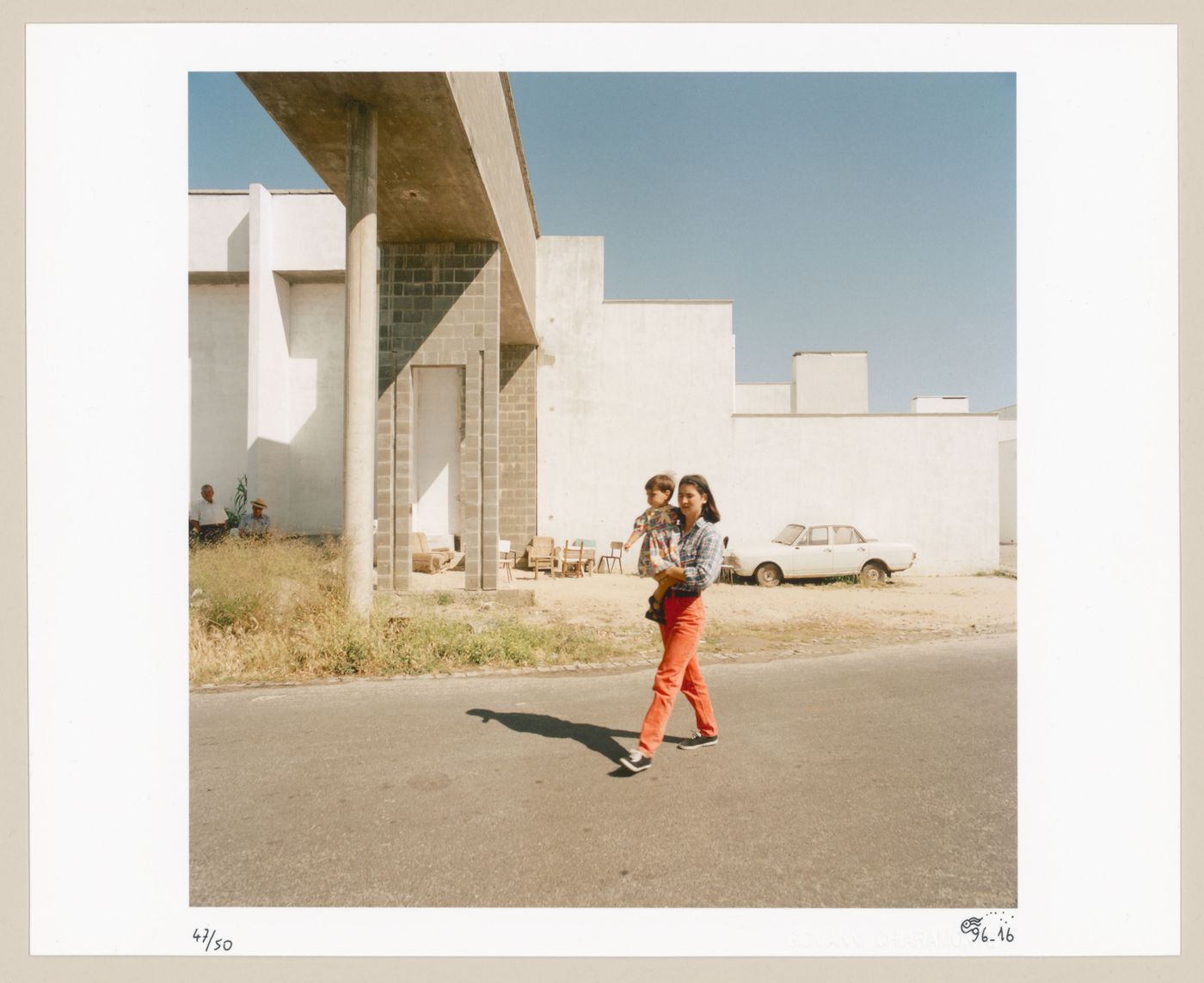Exhibition 'Siza, Baroque Chamber'
Siza Baroque

CCA, Álvaro Siza fonds/Canadian Centre for Architecture
Exhibition 'Siza, Baroque Chamber' Siza Baroque
Inauguration: September 12, 2024, Thursday, 6pm, Soares dos Reis National Museum
On September 12, the exhibition 'Siza, Baroque Chamber' opens, running until December 31 at the Soares dos Reis National Museum, alongside the Museum's collections and the temporary exhibition in the extension designed by Fernando Távora.
The exhibition is the result of the 'Siza Baroque' project - ranked first in the competition launched in 2021 by the Foundation for Science and Technology, for IC&DT projects within the scope of Álvaro Siza's Architecture - and concludes the research carried out over the last 3 years at the Center for Architecture and Urbanism Studies of the Faculty of Architecture of the University of Porto (CEAU/FAUP).
'Siza, Baroque Chamber' is an exhibition that brings together 18 works by architect Álvaro Siza, spanning different periods of his work, studied by a team of researchers coordinated by José Miguel Rodrigues (Researcher in Charge of the 'Siza Baroque' project and current director of the Research Center) and Joana Couceiro (Integrated Researcher and co-responsible for the project), both curators of the exhibition with Constança Pupo Cardoso (Designer and assistant curator of the exhibition).
The works by Álvaro Siza selected for the exhibition show the affinity that the author's compositions have established with the “Idea of Baroque” from an early age, focusing on works begun in the 70s and 80s, according to the researchers, the most ideologically baroque.
“The recognition of the nuances of human life in artistic expression and in the architectural construction of a collective territory - where there is room for repetition, anonymity, common everyday life, but also for places of exception, unique and unrepeatable - characterizes the Baroque city that Siza pursued and that this exhibition shows outside the academic sphere,” they add.
In connection with this premise, “the Soares dos Reis National Museum provides the visitor with a framework, taking them through the museum's collections before entering the chamber of Baroque echoes,” they say, pointing out that the exhibition “in addition to revealing some of the intricacies of the research to a diverse public, proposes a retroactive interpretation of Siza's work from chosen focuses.”
The exhibition can be visited at the Soares dos Reis National Museum until December 31, 2024.

Architecture, thought and music intersect at the Soares do Reis National Museum and the Clérigos Church
The program parallel to the exhibition, another proposal of the project, has been running since April with conferences by Eduardo Souto de Moura, Angél Garcia-Posada, Juan José Lahuerta and Maria Filomena Molder, and another cycle of conferences and a colloquium with all the researchers is still scheduled.
This second series of lectures (with José Miguel Rodrigues and Joana Couceiro - “Siza and the Baroque”; Ana Tostões - “Siza and the Modern”; and Jorge Figueira - “Siza and the Postmodern”) will take place on September 28 and will end with a debate with all the guests moderated by Sílvia Ramos, the project's researcher.
The colloquium “Concrete, White, Golden” will be held on December 7 and will include papers by the project's researchers: Sílvia Ramos, Miguel Araújo, Mariana Sá, Ricardo Leitão, Inês Sanz Pinto, Mafalda Lucas, Graça Correia, Hélder Casal Ribeiro, João Pedro Serôdio, Luís Urbano, Marco Ginoulhiac, Nuno Brandão Costa, and guests João Pedro Xavier and Susana Ventura.
The closing moment will be marked on December 14 with a concert at the Clérigos Church, where the vocal group Olisipo will perform Magnificat in gilded wood, a composition by Eurico Carrapatoso, a contemporary of ours (like Siza), who (like Siza in relation to architecture) assumes that he values tradition more than originality, since he is, in his own words, “more concerned with writing music than writing history”.
For the curators, this is “a composer of our time who works from the music of another time, as if the limits imposed by historical chronology were losing their rigidity”, pointing out that “as in Siza, originality and chronology become fragile values”.
This position in relation to the craft, shared by both authors, extends to the masters and the work itself: “the Magnificat is a tonal work in G Major, which is the tone I feel in the gilded carvings”, it is “a tribute to the Baroque” and, “naturally, the spirit of Bach echoes, hovering over the work”.
Echoes that the curators believe extend to architecture and to Siza, who goes so far as to say that “We all have a Baroque component in our minds that doesn't disappear like the rest.”
In the last quarter of 2024, it will be possible to put the commonplaces associated with the Baroque to the test, namely the chronological one, and (this is the belief of the researchers) understand how they are just starting points for a much broader worldview that (as Siza said) does not disappear.
Admission is free to all events, subject to capacity.

CCA, Álvaro Siza fonds/Canadian Centre for Architecture
Scientific Research and Technological Development Project on the Architecture of Álvaro Siza Vieira FCT:
SIZA/CPT/0021/2019
Funded by: FCT, Ministério da Ciência, Tecnologia e Ensino Superior; Ministério da Cultura; FAUP; CEAU.
Supported by: Museu Nacional Soares dos Reis; Fundação de Serralves; Fundação Calouste Gulbenkian; CCA; Drawing Matter; Casa da Arquitectura; Fundação Marques da Silva, Irmandade dos Clérigos e Conservatório de Música do Porto.
More information
www.sizabaroque.com
www.instagram.com/sizabaroque